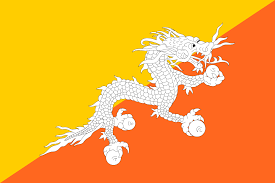Table of Contents
## Introduction
Officially known as the Kingdom of Bhutan, it is bordered by China to the north and India to the south, east, and west. Despite its small size, Bhutan’s distinctive qualities make it a significant player in the realm of global biodiversity, cultural preservation, and sustainable Development.
### Geographic Location
Bhutan spans approximately 38,394 square kilometers (14,824 square miles) and is characterized by its rugged terrain. The country is divided into three distinct geographical zones: the southern plains, the central valleys, and the northern mountain ranges. The southern region is covered by subtropical forests, while the central part features temperate forests and the northern areas consist of alpine meadows and glaciers.The country’s highest peak, Gangkhar Puensum, stands at 7,570 meters (24,836 feet) and is considered one of the world’s highest unclimbed peaks. Bhutan’s diverse geography contributes to its rich biodiversity and varying climate zones.

### Climate
Bhutan experiences a range of climates due to its diverse topography. The central valleys experience a temperate climate with cooler temperatures, while the northern mountainous areas have an alpine climate with cold winters and mild summers. The variation in climate supports a wide range of flora and fauna.
### Historical Background
Bhutan’s history is marked by its efforts to maintain independence and sovereignty. The country’s history is intertwined with the development of Tibetan Buddhism, which has played a crucial role in shaping its cultural and political landscape. Bhutan was unified in the early 17th century by Shabdrung Ngawang Namgyal, a Tibetan lama who established the dual system of governance that combines spiritual and temporal authority.In the 20th century, Bhutan began to open up to the outside world under the leadership of King Jigme Dorji Wangchuck. The country embarked on modernization and development while maintaining its traditional values. In 2008, Bhutan transitioned from an absolute monarchy to a constitutional monarchy, further promoting democratic governance.
### Cultural Heritage
Bhutan’s cultural heritage is deeply rooted in Tibetan Buddhism, which influences various aspects of daily life, art, and architecture. Traditional Bhutanese culture is characterized by vibrant festivals, colorful textiles, and intricate handicrafts. The country’s festivals, such as the Paro Tsechu and Thimphu Tsechu, are celebrated with elaborate dances, music, and rituals that attract visitors from around the world.
### Political System
Bhutan is a constitutional monarchy with a parliamentary system of governance. The political structure consists of the King, the Parliament, and the judiciary. The King of serves as the head of state and represents the unity and continuity of the nation. The Parliament, known as the National Assembly, consists of two houses: the National Council and the National Assembly. Members of the National Assembly are elected through general elections, while members of the National Council are appointed or elected by various constituencies.
### Social Structure
Bhutanese society is characterized by a strong sense of community and tradition. The country is home to various ethnic groups, with the majority being of Ngalop (Bhote) descent, followed by the Sharchops and Lhotshampas. The traditional way of life is centered around family, religion, and communal values.
### Economic Overview
Bhutan’s economy is primarily agrarian, with agriculture playing a central role in the livelihoods of the majority of its population. In recent years, tourism has become an increasingly important sector, contributing to economic growth and development.
### Sustainable Development
Bhutan is internationally recognized for its commitment to sustainable development and environmental conservation. The country’s development philosophy is guided by the concept of Gross National Happiness (GNH), which prioritizes well-being, environmental sustainability, and cultural preservation over purely economic indicators.
### Tourist Attractions
Bhutan is renowned for its natural beauty and cultural heritage, attracting visitors with its stunning landscapes, historic sites, and vibrant festivals. Key attractions include:- **Paro Taktsang (Tiger’s Nest Monastery)**: A renowned Buddhist monastery perched on a cliffside, offering breathtaking views and a spiritual experience.- **Thimphu Dzong**: The administrative and religious center of Thimphu, featuring impressive architecture and historical significance.- **Punakha Dzong**: A majestic fortress located at the confluence of two rivers, known for its stunning design and historical importance.
### Responsible Tourism
Bhutan’s tourism policy is designed to promote responsible and sustainable travel. The country operates a high-value, low-impact tourism model, requiring visitors to book through licensed tour operators and pay a daily minimum fee. This approach helps manage tourist numbers, ensure quality experiences, and minimize environmental and cultural impacts.
### Environmental and Social Challenges
Despite its progress, faces several challenges, including climate change, natural disasters, and social issues. The impacts of climate change, such as glacial melting and shifting weather patterns, pose risks to the country’s environment and economy. Additionally, must address issues related to rural-urban migration and youth unemployment as it continues to develop.
### Opportunities for Growth
Bhutan has significant opportunities for growth and development, particularly in areas such as sustainable tourism, renewable energy, and regional cooperation. By leveraging its natural resources, promoting its unique cultural heritage, and enhancing regional partnerships, can continue to achieve balanced and inclusive growth.https://indianfastearning.com/
### Conclusion
Bhutan, with its unique blend of tradition, spirituality, and natural beauty, stands out as a remarkable example of how a nation can balance modernization with cultural preservation and environmental sustainability. Its commitment to Gross National Happiness and responsible development serves as an inspiration for other countries seeking to pursue growth while maintaining a deep respect for their heritage and environment. As Bhutan navigates its path forward, it remains a captivating destination and a model of harmonious living in the modern world.http://www.youtube.com







